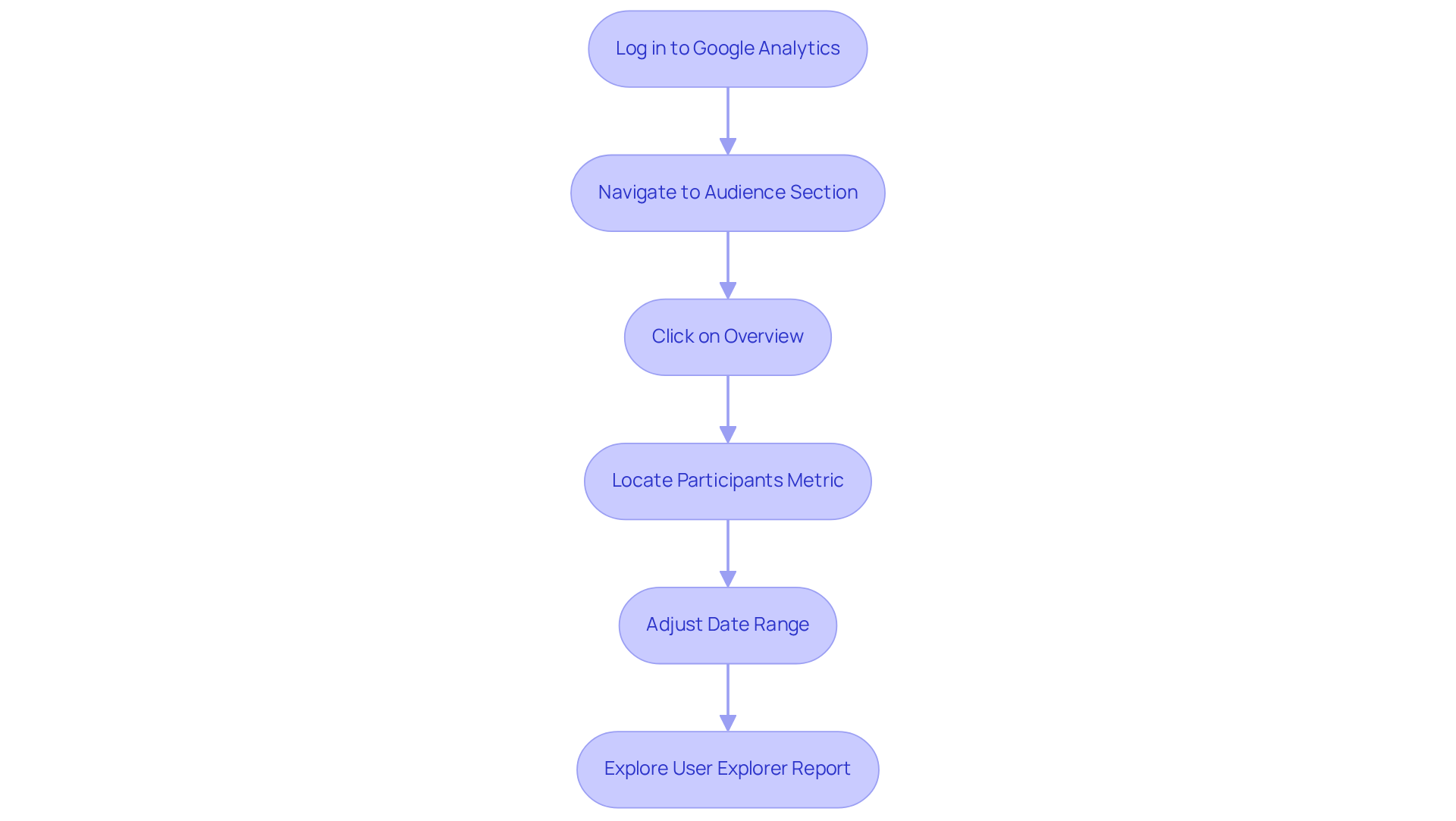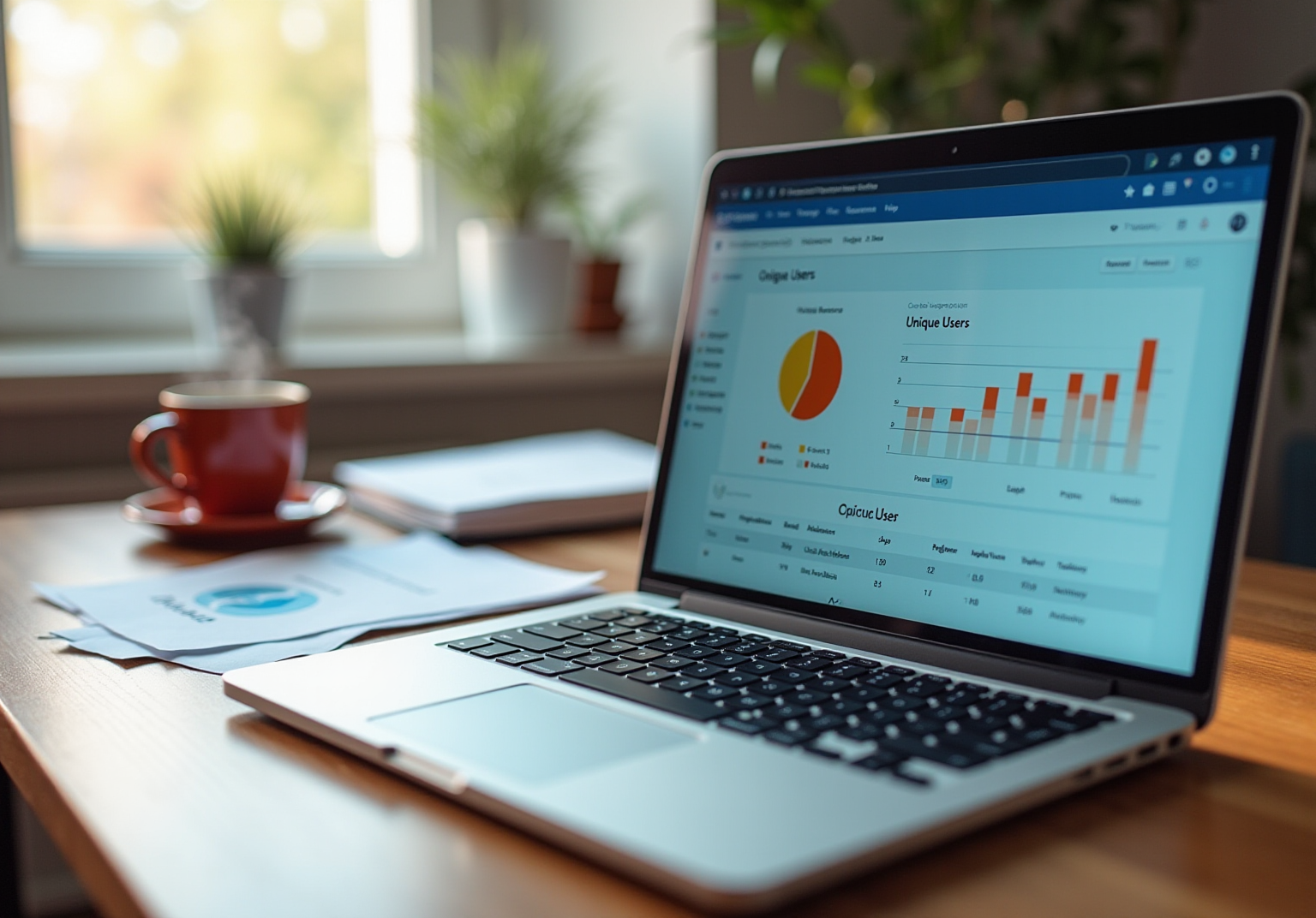
Overview
The article underscores the critical role of mastering unique users in Google Analytics for the triumph of direct-to-consumer (DTC) brands. Accurately tracking unique users empowers companies to evaluate the effectiveness of their marketing strategies, gain insights into audience behavior, and make informed, data-driven decisions. These actions are pivotal in enhancing conversion rates and fostering customer engagement. Real-world case studies included in the article serve as compelling evidence of these assertions, illustrating the tangible benefits of this approach.
Introduction
Understanding the unique users metric in Google Analytics is essential for direct-to-consumer (DTC) brands aiming for success in a competitive landscape. By focusing on distinct individuals rather than total visits, companies can unlock profound insights into audience engagement and behavior, ultimately refining their marketing strategies.
However, amidst the vast array of data available, how can brands effectively track and leverage these unique users to drive growth and enhance customer experiences?
Define Unique Users in Google Analytics
Unique users Google Analytics represents distinct individuals who are separate visitors to your website within a defined time frame. Each distinct individual is identified by a specific identifier, typically a cookie, which tracks their interactions with your site. This metric is crucial as it enables companies to understand the number of unique users Google Analytics shows engaging with their content, rather than merely counting total visits that may include repeated interactions from the same individual. By focusing on distinct consumers, DTC companies can more accurately assess their audience size and engagement levels, leading to more informed marketing strategies.

Explain the Importance of Tracking Unique Users
Monitoring distinct individuals is essential for various reasons: it enables companies to assess the impact of their marketing efforts, comprehend audience behavior, and recognize trends over time. For instance, a $30M apparel company that partnered with Parah Group saw a 35% increase in conversion rates after implementing targeted strategies such as redesigning the homepage to highlight social proof and optimizing product pricing. This underscores the significance of understanding distinct client information.
By analyzing the unique users Google Analytics reports for their site, DTC companies can evaluate the effectiveness of their marketing initiatives and adjust strategies accordingly. Furthermore, this metric aids in segmenting audiences for targeted marketing, ultimately leading to improved conversion rates and higher average order values. Understanding distinct client information also assists in identifying potential issues with user experience or content relevance, enabling companies to make necessary adjustments.
The case of Grab Green, a $15M cleaning product brand, further illustrates this point; they achieved a 73% increase in average order value through optimized customer engagement strategies, including testing free shipping thresholds and adding bundles to incentivize larger purchases.
![]()
Detail How Google Analytics Tracks Unique Users
Google Analytics effectively monitors distinct individuals through the strategic use of cookies. When a user accesses a website, a cookie is stored in their browser, containing a unique identifier. This identifier empowers Google Analytics to recognize returning users and differentiate them from new visitors. Tracking occurs over a defined period, typically 30 minutes of inactivity; after this timeframe, a returning user is classified as a new visitor. This methodology ensures that brands can accurately quantify their distinct audience count, providing a clearer perspective on audience engagement.

Guide to Finding Unique Users in Google Analytics
To identify unique users in Google Analytics, adhere to the following steps:
- First, log in to your Google Analytics account.
- Next, navigate to the 'Audience' section located in the left-hand menu.
- Click on 'Overview' to access general audience metrics.
- Locate the 'Participants' metric, which reflects the count of unique users in Google Analytics within the specified date range.
- Adjust the date range in the top right corner to analyze various periods.
- For deeper insights, delve into the 'User Explorer' report under the 'Audience' section, which provides detailed information on unique users in Google Analytics and their individual behavior.
By consistently reviewing this data, DTC brands can discern distinct consumer trends and make informed decisions based on engagement.

Outline Best Practices for Utilizing Unique User Data
To effectively utilize unique user data, it is essential to implement best practices that enhance marketing effectiveness and drive sustainable growth:
-
Segment Your Audience: Leverage unique user data to segment your audience by behavior, demographics, or acquisition channels. This strategy facilitates more targeted marketing efforts, ensuring that your messaging resonates with the right individuals.
-
Monitor Trends Over Time: Regular analysis of distinct audience metrics is crucial for identifying trends and shifts in behavior. This proactive approach enables timely adjustments to marketing strategies, keeping your brand relevant and responsive.
-
Combine with Other Metrics: Integrate distinct participant information with other critical metrics, such as bounce rate and conversion rate. This comprehensive understanding of engagement provides deeper insights into user behavior and preferences.
-
Test and Optimize: Engage in A/B testing informed by insights from distinct user information. This iterative process enhances website components and marketing efforts, ultimately leading to improved performance and user experience.
-
Leverage Insights for Content Strategy: Utilize the data to guide content creation, ensuring that it not only resonates with your unique audience but also effectively addresses their needs and interests.
By adhering to these best practices, DTC brands can significantly enhance their marketing effectiveness, establishing a strong foundation for sustainable growth.

Conclusion
Understanding unique users in Google Analytics is essential for the success of Direct-to-Consumer (DTC) brands. By concentrating on distinct individuals rather than total visits, companies gain a clearer understanding of their audience, enabling them to tailor their marketing strategies effectively. This nuanced approach not only enhances audience engagement but also drives informed decision-making, leading to sustainable growth.
Key insights from this article underscore the importance of tracking unique users, as it allows brands to:
- Evaluate marketing effectiveness
- Identify trends
- Optimize user experiences
Real-world examples, such as the apparel company that experienced a significant increase in conversion rates and Grab Green's rise in average order value, illustrate the tangible benefits derived from leveraging unique user data. Furthermore, the best practices outlined, including audience segmentation and data integration, empower DTC brands to continuously refine their marketing efforts.
Ultimately, mastering unique user metrics in Google Analytics transcends being merely a technical skill; it represents a strategic advantage for DTC brands. By embracing these insights and implementing targeted practices, companies can enhance their marketing effectiveness, foster deeper connections with their audience, and navigate the competitive landscape with confidence. As the digital marketplace evolves, prioritizing unique user data will remain a cornerstone of successful brand strategies.
Frequently Asked Questions
What are unique users in Google Analytics?
Unique users in Google Analytics refer to distinct individuals who visit your website within a specific time frame. Each unique user is identified by a specific identifier, typically a cookie, which tracks their interactions with your site.
Why is tracking unique users important?
Tracking unique users is important because it allows companies to assess the impact of their marketing efforts, understand audience behavior, and recognize trends over time. This metric helps businesses evaluate the effectiveness of their marketing initiatives and adjust strategies accordingly.
How can tracking unique users impact marketing strategies?
By analyzing unique user data, companies can segment their audiences for targeted marketing, which can lead to improved conversion rates and higher average order values. It also helps identify potential issues with user experience or content relevance.
Can you provide an example of how tracking unique users improved a company's performance?
Yes, a $30 million apparel company that partnered with Parah Group saw a 35% increase in conversion rates after implementing targeted strategies based on unique user data, such as redesigning their homepage and optimizing product pricing.
What was the outcome for Grab Green after analyzing unique user data?
Grab Green, a $15 million cleaning product brand, achieved a 73% increase in average order value by optimizing customer engagement strategies, which included testing free shipping thresholds and adding bundles to encourage larger purchases.
FAQs











